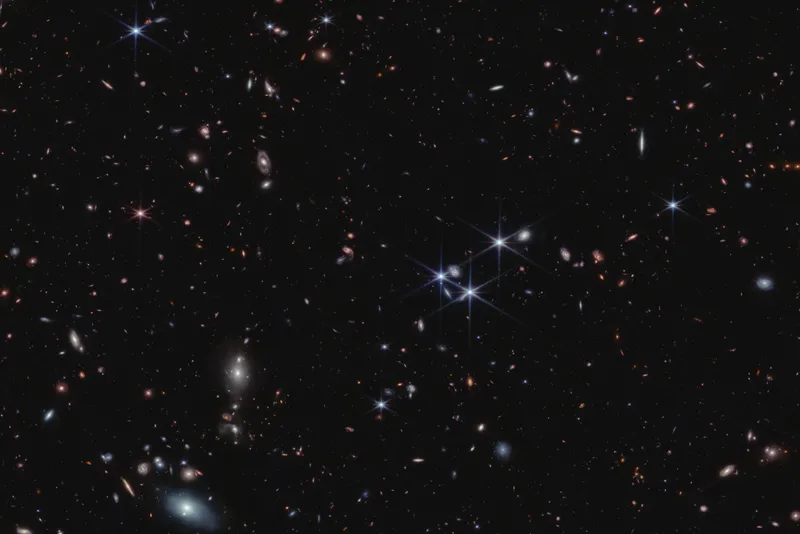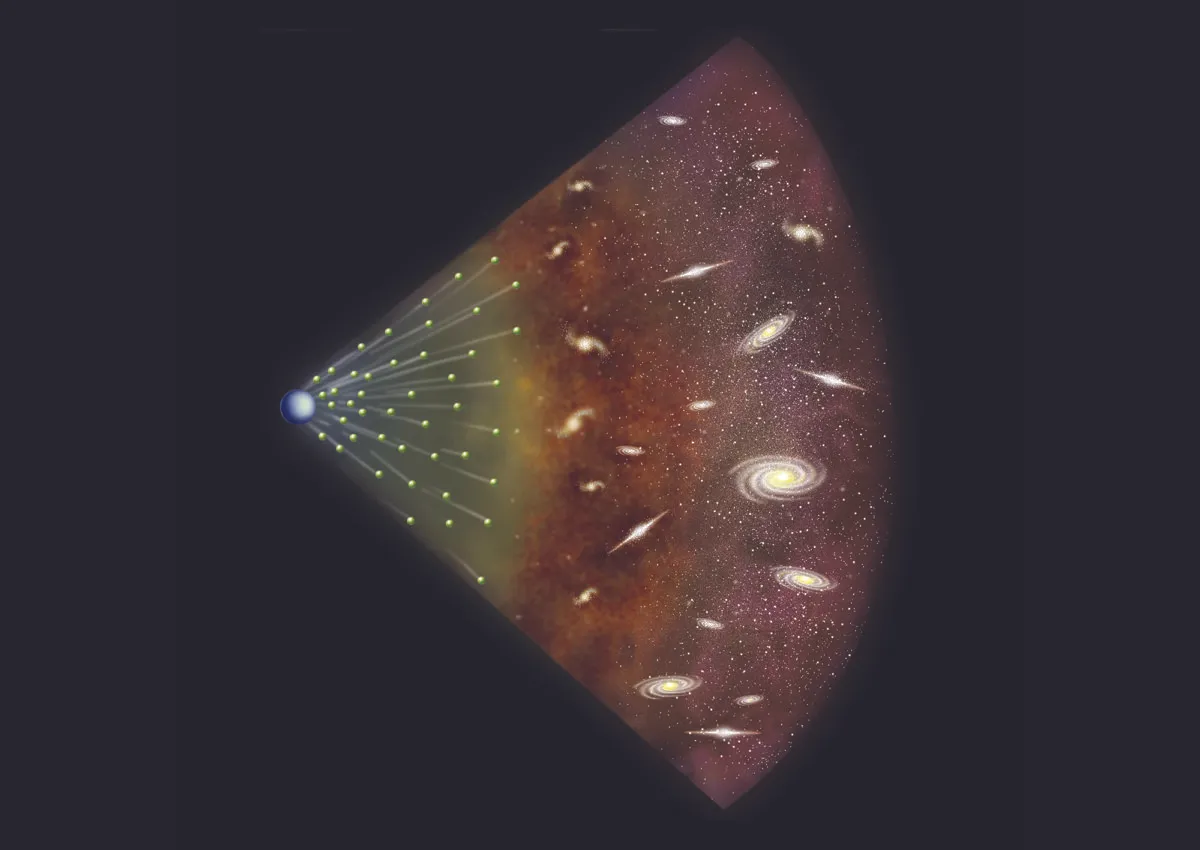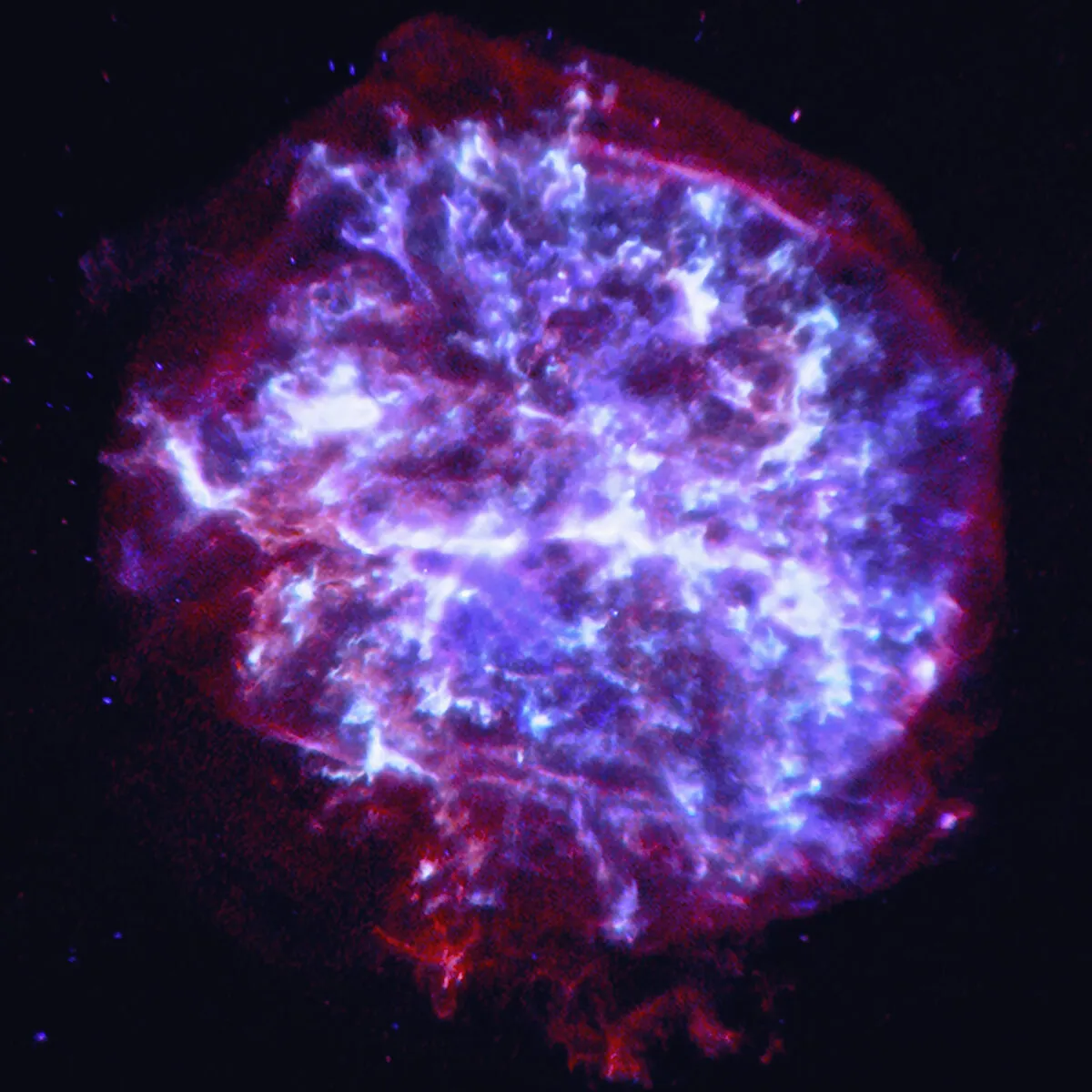The first stars may well have been the most important objects in our 13.8 billion-year cosmic story, their light illuminated the end of the Universe’s dark ages, which followed the Big Bang.
Their deaths may have provided raw material, in the form of heavy elements forged in their cores, for each subsequent generation of stars.
Finding out what these stellar pioneers were really like is an important goal of modern astronomy.

A lot depends on how massive (and therefore how bright) these first stars really are, as well as how common they are – each galaxy may only get one of these stars.
Computer simulations suggest that conditions in the early Universe, and in particular the absence of elements other than hydrogen and helium, favour the production of massive stars, but we need to test these models.
More from Chris Lintott:
- Why do some galaxies have more supernovae than others?
- Solving the three-body problem in astronomy
- How do stars form?

Depending on which ingredients you tweak in your stellar recipe, it’s easy to end up with a population of first stars where each weighs several hundred times the mass of the Sun, or a series of clusters of nearly Solar mass stars.
A paper by astronomers in Heidelberg, Germany, Taipei, Taiwan, and Portsmouth, UK, suggests it might be possible to shed some light on the problem with the JWST, not by observing the stars themselves, but by finding the galaxies they called home.
The team use a code called ENZO to simulate how the Universe changes during the first few billion years of its existence.
They compare the results from simulations where the masses of the first stars – known confusingly as ‘Population III’ – are different.
It turns out you end up with a very different set of galaxies in each case, because these stars change their surroundings.
Any surrounding material evaporates under their bright glare, and neighbouring gas is affected too.
Their violent deaths as supernovae – the details of which depend very much on the mass of the star – scatter those heavy elements through the rest of the system, providing the raw material for the next generation of stars.

Galaxies with more massive Population III stars produce normal stars more rapidly, which makes sense. The more massive early stars will burn through their fuel faster and explode as supernovae more rapidly.
But the presence of a truly impressive set of first stars turns out to be a double-edged sword. The powerful supernovae churn up the gas throughout the small protogalaxy, preventing further galaxy growth.
So, although such a system will shine brighter early on, it ends up fainter than a counterpart which starts with more modest stars.
But unless something is really awry with our understanding of galaxy formation it definitely will be able to measure the properties of such protogalaxies.
After decades of effort, the secrets of the first stars could be just around the corner.
Chris Lintott was reading How the Population III initial mass function governs the properties of the first galaxies by Li-Hsin Chen et al.Read it online at: arxiv.org.
This article originally appeared in the December 2020 issue of BBC Sky at Night Magazine.
